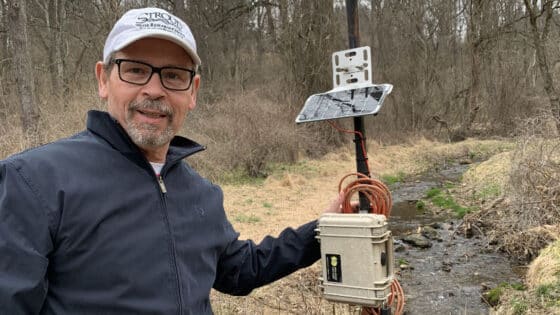Ribot, M., D. Von Schiller, M. Peipoch, F. Sabater, N. B. Grimm, and E. Martí. 2013. Freshwater Science 32(4):1155–1167.
Abstract
Human activity has significantly increased dissolved inorganic N (DIN) availability and has modified the relative proportion of NO3− and NH4+ species in many streams. Understanding the relationship between DIN concentration and DIN uptake is crucial to predicting how streams will respond to increased DIN loading. Nonetheless, this relationship remains unclear because of the complex interactions governing DIN uptake. We aimed to evaluate how biofilms from 2 streams differing in background DIN concentration would respond to increases in availability and changes in speciation (NO3− or NH4+) of DIN. We measured DIN uptake by biofilms in artificial flumes in each stream, using separate 15N-NO3− and 15N-NH4+ additions in a graded series of increasing DIN concentrations. The ambient uptake rate (U) was higher for NO3− than for NH4+ in both streams, but only U for NH4+ differed between streams. Uptake efficiency (UN-specific) at ambient conditions was higher in the low-N than in the high-N stream for both DIN species. A Michaelis–Menten model of uptake kinetics best fit the relationship between uptake and concentration in the case of NH4+ (for both streams) but not in the case of NO3− (neither stream). Moreover, saturation of NH4+ uptake occurred at lower rates (lower Umax) in the low-N than in the high-N stream, but affinity for NH4+ was higher (lower Ks) in the low-N stream. Together, these results indicate that the response capacity of biofilm communities to short-term increases of DIN concentration is determined primarily by the ambient DIN concentrations under which they develop. Our study also shows that DIN uptake by benthic biofilms varies with DIN availability and with DIN speciation, which often is modified by human activities.


